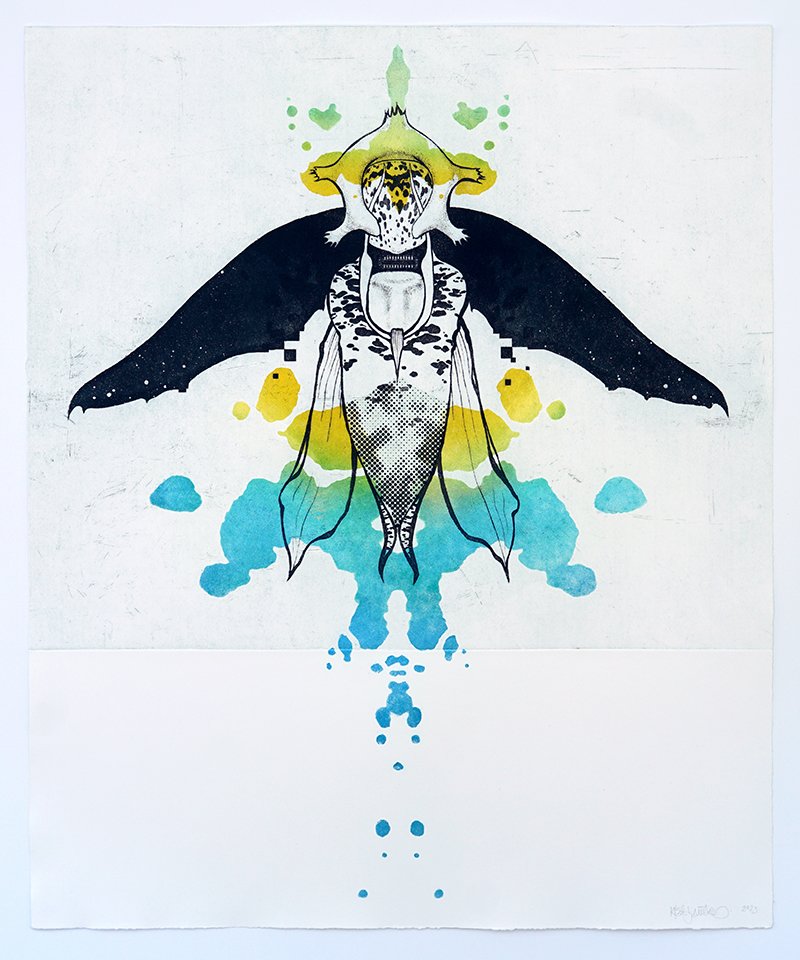Above:
Kasia Fabijańska, Distraction 3, 2023, etching, photogravure chine collé & planographic, 65 x 53 cm,
Herd Morality, 2023, etching, photogravure chine collé & planographic, 61 x 44 cm
untitled (detail), 2023, watercolour & mixed media on paper, 115 x 82 cm
untitled, 2023, watercolour & mixed media on paper, 115 x 85 cm
Distraction 2 (detail), 2022, etching, photogravure chine collé & planographic, 55 x 45 cm
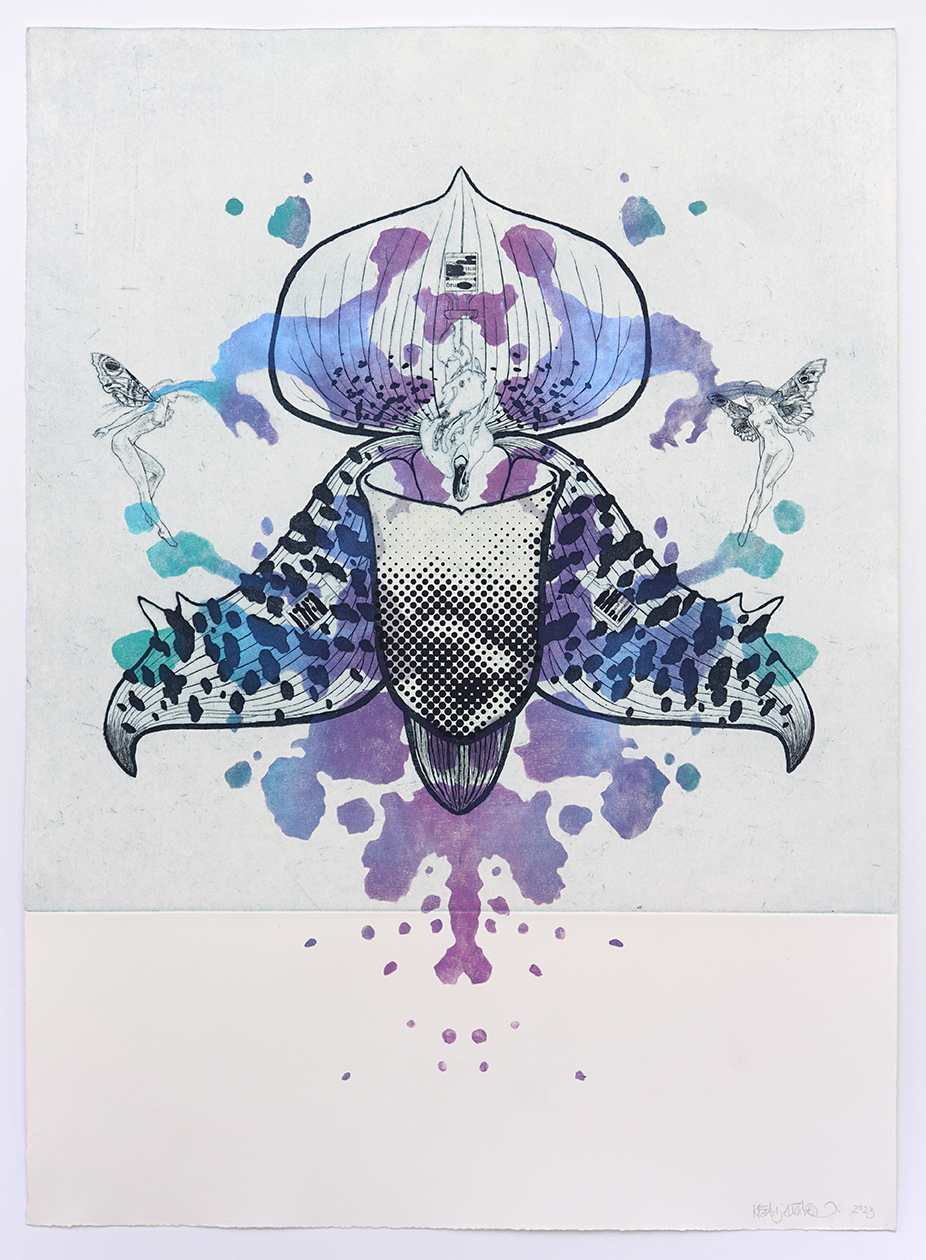
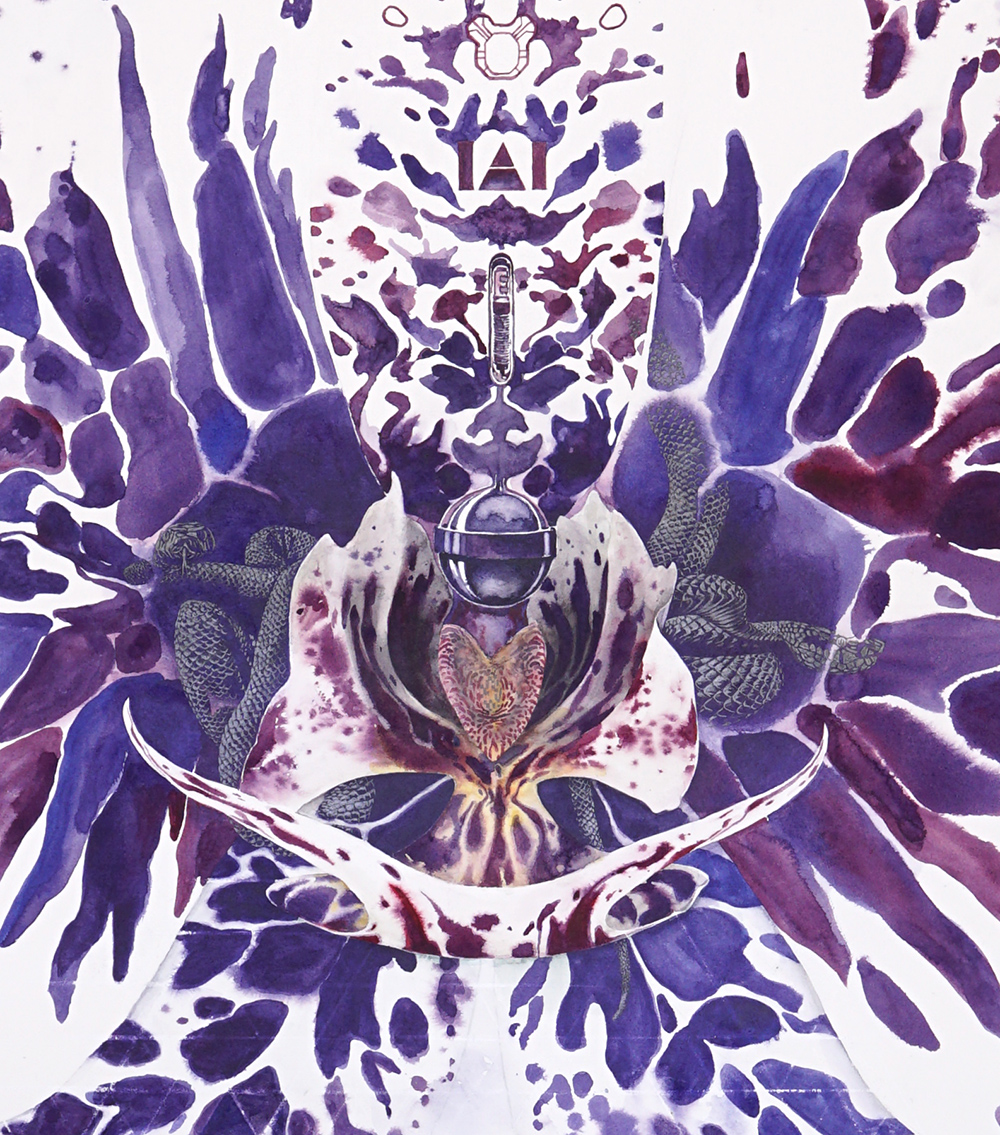
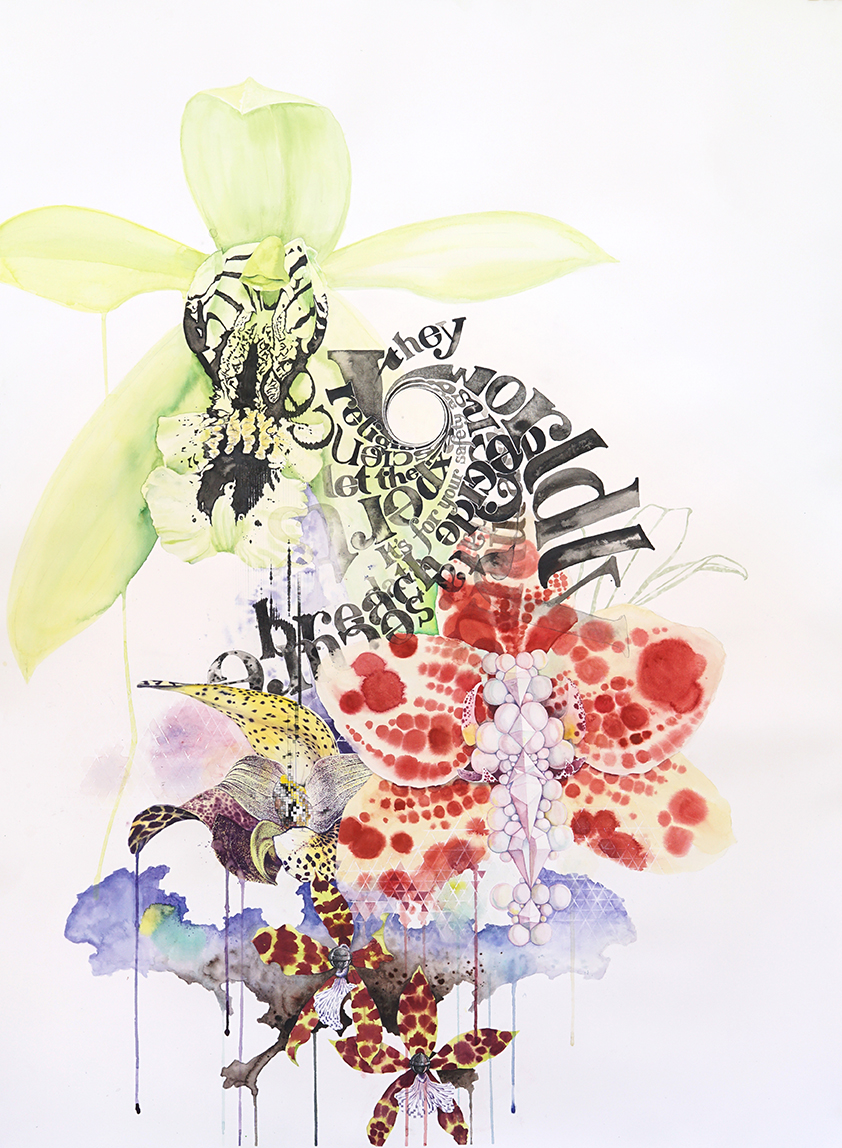
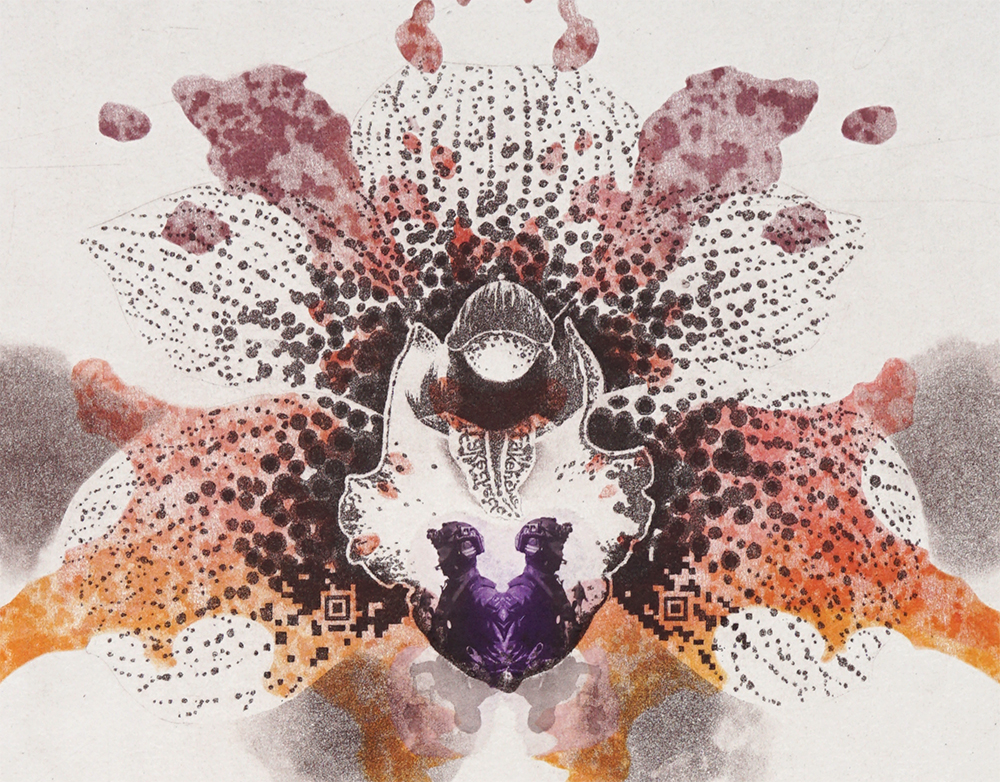
Q: What were some of the foundation ideas for this exhibition project?
A: Although the exhibition presents as a solo, it sits alongside work by two other artists. The idea for this exhibition was conceived over a year ago between myself and artist Tatjana Este, who also invited Ian Haig. Brought together over the last few years by common experiences and gravitating towards overlapping themes, we needed to express what we felt and observed around us. In the spectrum of visual arts reflection and discourse, it appeared as though we sat in a silent void. Where did everyone go or were they refraining from a certain, provocative commentary, difficult discussion or reflection on current events and their deeper, future implications?
Q: How did the artwork selection take place? OR How did the body of work develop?
A: We did not intend to cross-reference to each other’s practise for the exhibition, rather hold faith that common threads may emerge, like common interests or discussions shared over dinners.
My own ideas emerged after a long dry spell and came with an uncharacteristic pop of vibrant colour. After a relocation to regional NSW and losing momentum through the events of 2020-21, I lost the muse. My mind was not at ease, creativity was hijacked and whatever I started, I quickly lost interest in. Spiders moved in to my new garage studio and wove their webs, literally and metaphorically. I can’t recall the moment the idea came, sometime in mid-2022, but it very quickly turned into a gold mine for expression and the redback spider on my studio desk had to go.
Few prints were rejected as most took months of development and effort to form a visual language, so to commit to making them, I had to be sure the idea was going to work fairly well as art on a wall. The methodical planning and process that goes into printmaking can sometimes restrain creative flow and not keep up with new ideas forming in my head. So I began a series of large watercolour and mixed-media works to fill that gap and resolve or trial whatever vision was coming at me. Painting and drawing can give more immediate results and responses than the slow process of printmaking. As the installation of the show drew close, some works were left out, still unresolved, and I feel this body of work may take more time to mature and evolve.
Q: How does the exhibition manifest – what do visitors experience?
A: The exhibition presents as a series of multi-method prints and larger mixed-media works representing colourful exotic orchids, at first glance. On closer inspection, the flowers contain elements that indicate the work is not really about the flowers. People will see pixels, Rorschach ink blots, microchips, snakes, distortion and surveillance cameras. Preferring to ask questions, I hope the images relay more mystery and hint at the subjects we all grapple with. In adjacent rooms, Tatjana Este presents MONUMENTO, an exhibition on art, protest and memory, with a series of paintings, sculpture works and installation.
Ian Haig’s exhibition Untitled Syndrome is comprised of three video works. Haig’s previous works have looked to the contemporary media sphere and its relationship to the visceral body.[1]
Q: What are some of the key works and what subject matter do they deal with?
A: Orchids use sophisticated methods of reward, mimicry and deception to lure pollinators to their blooms. That is the opening line and the theme I stay with in my artist statement. Nature always seems to provide a parallel or metaphor and the artworks hopefully point to concepts other than flowers that are relevant in our cultural and political landscape. In what some may call the post-truth era, where the meaning of many words is dissected and manipulated out of context, where we find a seemingly bottomless mine of information, and we enter the age of AI, how do you discern, how do you give meaning?
Q: What is it about the printmaking experience that you most appreciate?
A: Naturally drawn to drawing and the graphic arts, I tend to produce better work with some planning. I mentioned before that printmaking can restrain; it also beneficially slows down the development stage and during that slower process, new ideas and details can be added. The prints have between two to three layers created in different techniques. I developed a way of printing stencil monoprints as the background, then adding the final sugarlift and line-etching with a photogravure chine collé detail. Each stage had to be printed separately and some prints took three to four months to get to the final stage. I took process photos to create short videos that condense the months into seconds. These are on my Instagram account @kasiafabijanska. Having spent so much time on the prints, it feels better to know I can produce an edition and share it with more people and still keep one for myself. Prints can also be more accessible, being cheaper than a one-off painting or drawing.
—
Dis-traction plus exhibitions by Este and Haig are at Rubicon A.R.I. in Melbourne, 2-20 December. Opening night 2 Dec, 6-8pm
[1] Artist’s website: https://ianhaig.net/index.php?section=bio
—
Join the PCA and become a member. You’ll get the fine-art quarterly print magazine Imprint, free promotion of your exhibitions, discounts on art materials and a range of other exclusive benefits.

